Full Guide To Moldavite vs. Malachite (This is the Difference)
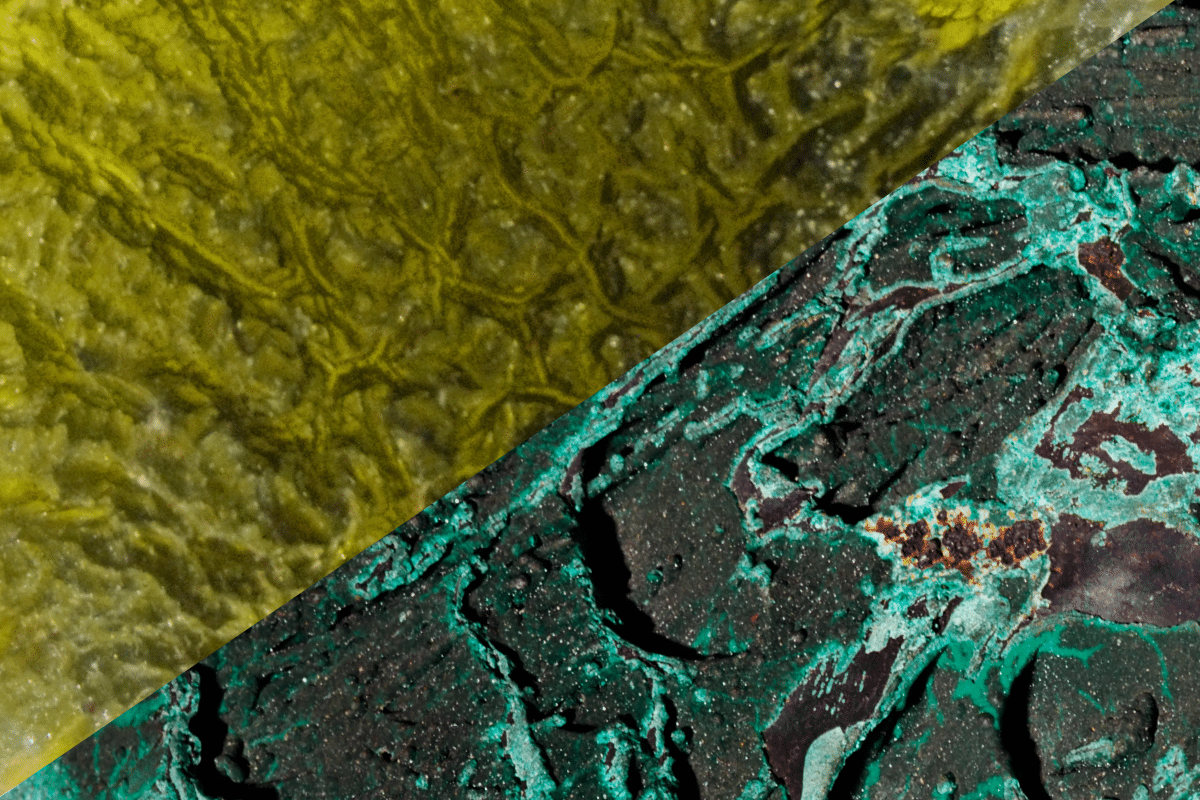
In order to work with our crystals effectively, we need to understand their properties. With crystals that are regularly confused, such as moldavite and malachite, it can be difficult to determine which one to work with. The answer should always be; the one that you are drawn to the most. However, if you are looking to find the difference in physical appearance as well as metaphysical properties, you’ll find your answer here.
Malachite and moldavite are very different. Malachite is opaque with green banding and relatively soft, while moldavite is a glass and thus transparent/translucent with an irregular surface texture and is often rather thin on the ends. Metaphysically, moldavite causes massive transformation, while malachite helps with heart healing.
Continue reading if you want to know more about the (physical) qualities of these stones, as well as how you can use them in your spiritual practice.
Also read: Malachite vs. Azurite: This Is The Difference
Want more help or information? If you have any more questions after reading this blog post or want a personal answer for your specific situation, join the free Facebook group! We promise you’ll get an answer from either our team members or a community member.
Moldavite vs. Malachite – How To Tell The Difference?
In order to understand the difference between these two stones, we can look at the color, shape, pattern, clarity, and more. Below we’ll describe all these aspects in detail.
Chemical Composition
Moldavite is a tektite, a group of minerals caused by meteor strikes. This particular type of tektite is thought to have originated from a strike 15 million years ago, where molten sand was flung into different directions, and solidified into glass. As a result, this stone can’t be classified as a crystal. After all, they lack a crystalline structure.
Malachite, on the other hand, is formed as a secondary mineral of copper ores as a result of oxidation or weathering processes. The weathered and oxidized copper in this stone is what causes the green color. The mineral forms in limestone and other carbonate minerals.
Color
Moldavite and malachite are green; however, their hues differ. Moldavite varies in hues from yellow to brown and can sometimes look like peridot in terms of color. However, most often, you’ll find they have a mossy green color. If you see a piece of moldavite with a bright green color, it is most likely a fake.
Malachite commonly has an emerald green color but varies from light to dark and almost black. There is also distinct banding, with each band a different shade.
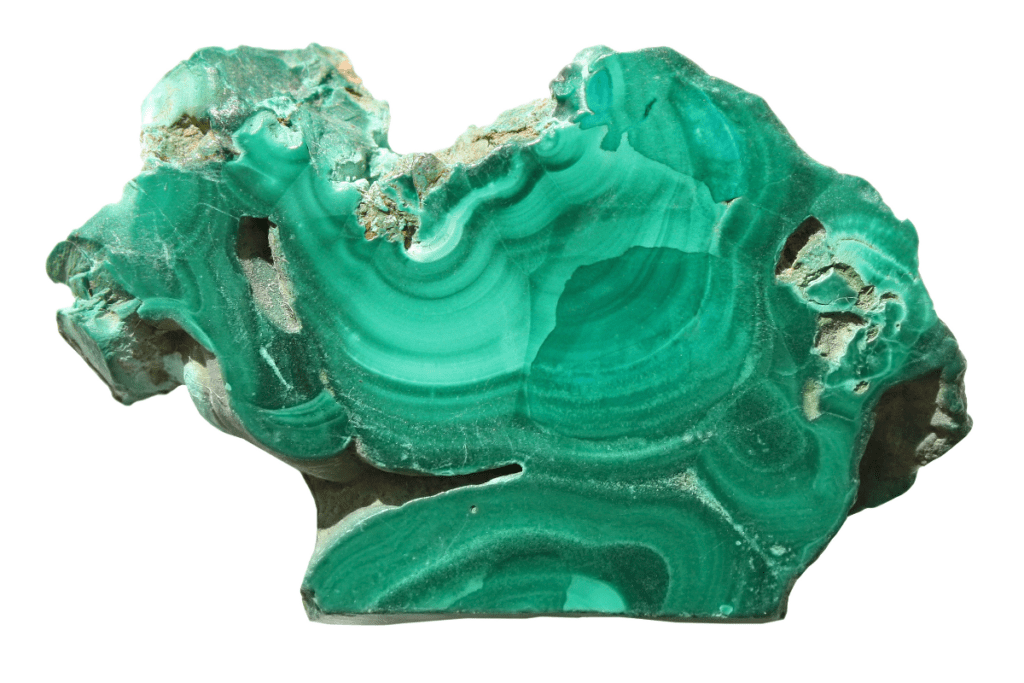
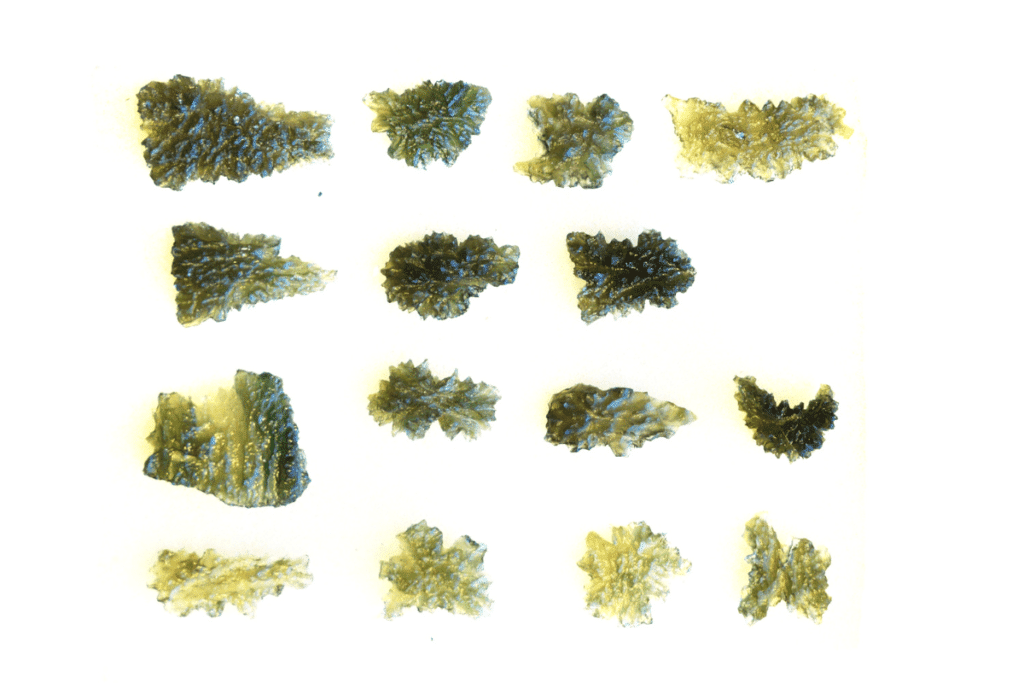
Pattern and Clarity
Malachite is probably one of the easiest stones to recognize, especially when polished. The reason for this is that it has banding formations, with shades ranging from light to dark green or even almost black. The banding patterns of this stone are unique and differ from stone to stone. The stones are opaque in transparency and have a vitreous (glass-like) luster.
Moldavite doesn’t exhibit a banding formation, instead it is the surface texture that sets it apart; this stone almost looks like it has veins running through it. As it is a glass, it is translucent. This is also what makes real moldavite difficult the differentiate from a fake.
Normally, a fake crystal is likely made of glass and can therefore have bubbles or a particular shine. However, moldavite is, at its core, a green glass. Besides, it is extremely rare and valuable. To double-check, here are some indicators of fake moldavite:
- It was not bought from a reputable seller
- It was reasonably priced, or you received a large piece. Real moldavite is really, really expensive.
- Did the seller say it came from anywhere apart from the Czech republic? This is the only place moldavite is found.
- Faceted stones that do not have bubbles or inclusions.
- If you can see multiple pieces from one seller, and they look like they have the same pattern, they are possibly made with a mold.
Also read: Jade vs. Malachite: This Is The Difference
Hardness
Moldavite is a fairly hard stone, rating 5.5 to 7.0 on the Mohs hardness scale. Malachite, on the other hand, is a very soft mineral, rating about 3.5 – 4 on the scale.
If you’re unfamiliar, the Mohs scale of hardness determines a stone’s hardness by measuring how scratch-resistant it is. According to this scale, a stone can scratch any other mineral with a lower score. For reference, talc is a 1, whereas diamond is a 10.
As a result, moldavite is not entirely immune to scratches or damage but is durable enough for use. Malachite, however, requires special care. Still, it can be used in jewelry.
Location
Moldavite is very rare and only found in the Czech Republic. It’s a tektite, meaning it was formed as the result of a meteor strike. However, it was formed through materials found on earth and isn’t a material that was brought here by the meteor.
Malachite is more common, though still a rare material. It is most notably found in Russia and Egypt, among other parts of the world.
Care
Moldavite and malachite are best cleaned by dusting it off with a dry, soft cloth. For moldavite it’s fine to dampen the cloth a little. The same goes for polished malachite, if you dry it off as soon as possible. Raw malachite must be kept away from water. This is because the copper elements within it will react with the water to produce toxic fumes.
If you use these stones for their metaphysical properties, you might want to energetically cleanse and charge them as well. This way, any negative energy is removed, and the stones can continue to work for you.
Luckily, moldavite does not require cleansing or recharging. In fact, it can be used like selenite and clear quartz to cleanse and recharge other crystals. Moldavite contains toxic substances; hence, ingestion should be avoided. You can clean the stone using water if needed.
For malachite, consider placing it in the light of the full moon, or using sound the cleanse and recharge its energies.
Also read: Can Malachite Go In Water? (Full Guide)
Metaphysical Properties
Beware that crystals are never a replacement for professional medical help. If you have any issues, see a doctor first and follow their advice.
If you’re researching moldavite, you’ll have likely heard stories of people’s lives changing massively after buying a piece. Some even report losing friends they’ve had for years, jobs, or committed relationships. This is because moldavite is an extremely powerful mineral, that will force you to make choices in line with what is best for you. So, if your friends aren’t helpful or good for you, you might find yourself cutting them off.
Moldavite’s connection to the heart chakra encourages recognition and release of hard feelings. It also helps with self-esteem, relationships with others, compassion, and empathy. Most of all, it’s a stone of transformation for those who feel stuck in life.
Malachite, on the other hand, is best known for its strong connection to the heart chakra. It helps attract more love into your life and is considered a tool for change and personal development. This stone is reliable in times of transition and uncertainties, as it helps bring harmony and strengthens your intuition.
Also read: The Complete Guide To Wearing Malachite
Chakra Association
Moldavite is primarily connected to the heart chakra, and so is malachite. However, malachite is also used to activate several other chakras like the crown, third eye, solar plexus, and root chakra, while moldavite is also connected to the root chakra. Let’s have a look at what these chakras are associated with below.
The heart chakra is found in the middle part of the breastbone. This chakra governs how we perceive, receive, and give love, empathy, and compassion. It also governs our interactions with the outside world.
The crown chakra is found at the top of the head. This is the chakra responsible for our thought patterns, our belief systems, and our spirituality. An open crown is a gateway to spiritual realms and a tool for communication with the divine.
The third eye chakra is located between the eyebrows. This chakra is involved with our emotional awareness, thoughts, intuition, and spiritual intelligence. Any third eye chakra stone will stimulate the third eye, balance our perceptions and connect us to our higher selves.
The solar plexus is related to our self-esteem and joy. An open solar plexus will facilitate the recognition and release of emotional pain from the past.
Lastly, the root chakra is found at the end of the spine. It is responsible for stability, security, and grounding.
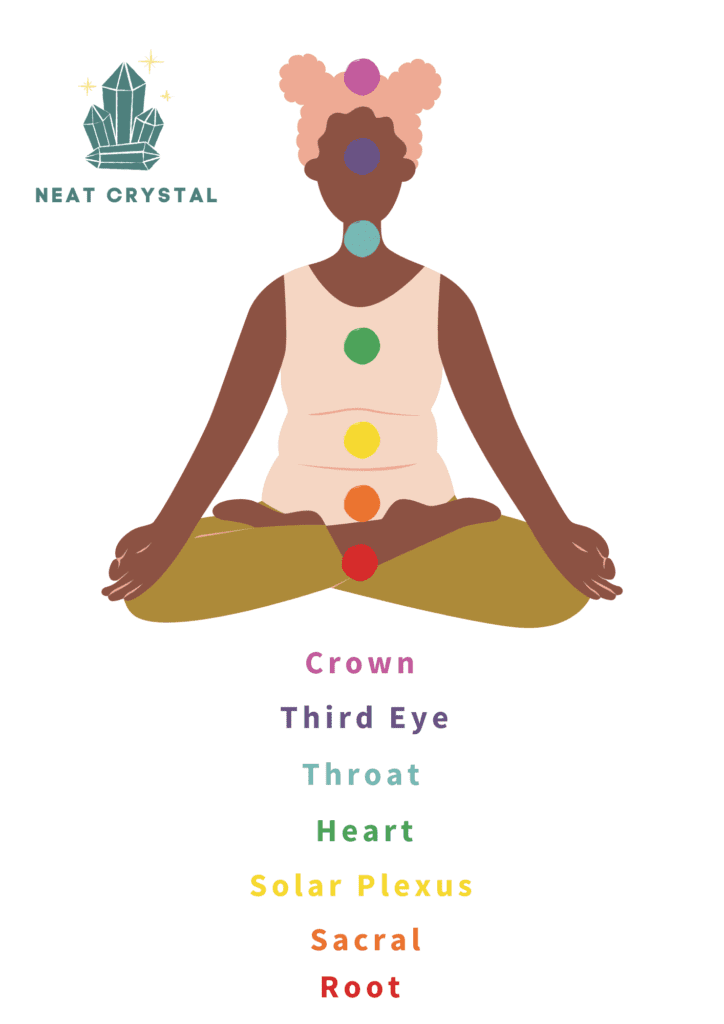
Planetary Association
Malachite is associated with Jupiter and Venus. Jupiter represents intellect, expansion, religion, politics, and philosophy. The influence of this planet encourages optimism, exploring ideas, and ethical and moral values. The planet is also associated with luck and good fortune.
Venus is the planet associated with art, beauty, grace, and charm. It governs our feelings of contentment and pleasure. The planet encourages us to acknowledge and appreciate the things we have. In romantic relationships, the planet will govern harmony, romance, pleasure, and emotional attachment.
Moldavite is ruled by Uranus and Saturn. Uranus is the planet associated with our consciousness and perception. It represents innovation, rebellion, revolution, and free will. Saturn, on the other hand, represents responsibility, discipline, and karma. It also governs power and authority.
Zodiac Association
Neither of these stones are birthstones. However, they do have connections to certain zodiac signs, especially through their planetary association.
As said, malachite is connected to Jupiter, which rules Sagittarius, and Venus, ruler of Taurus and Libra. Moldavite, on the other hand, has a connection to Uranus, ruling Aquarius, and Saturn, ruler of Capricorn.
Now, of course, if you do not have any of these signs in your birth chart, you can still work with these stones. A zodiac connection just means that the stone will help bring out the best of a sign while working on its challenges. Still, if you’re attracted to either of these stones, feel free to work with them!
If you’re thinking about gifting malachite, it is considered the stone for the 13th anniversary.
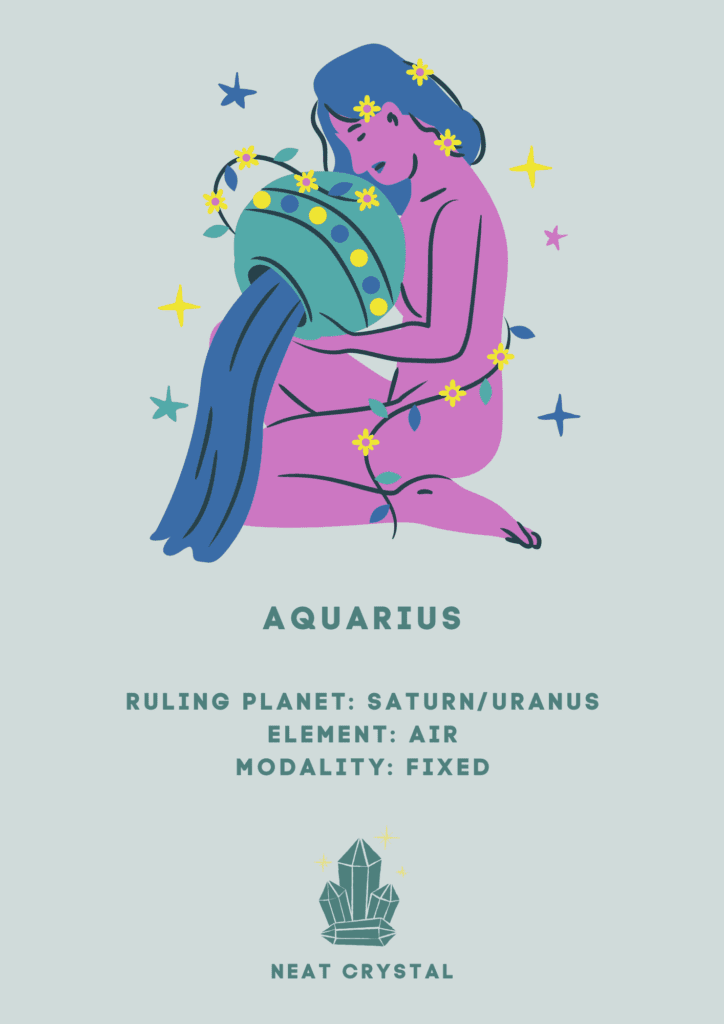
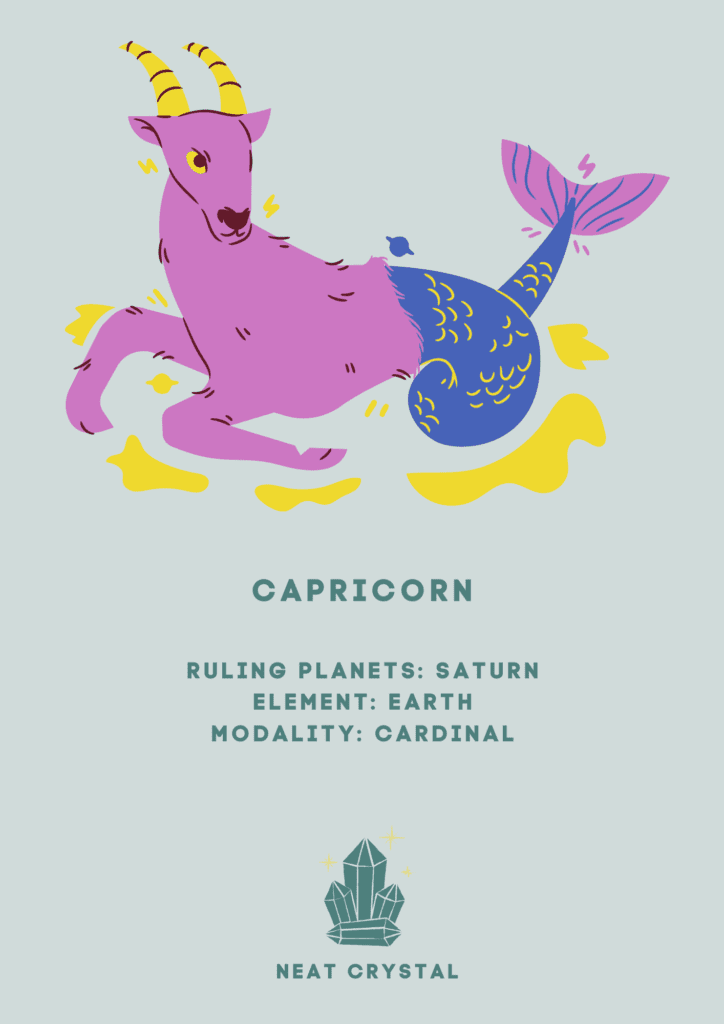
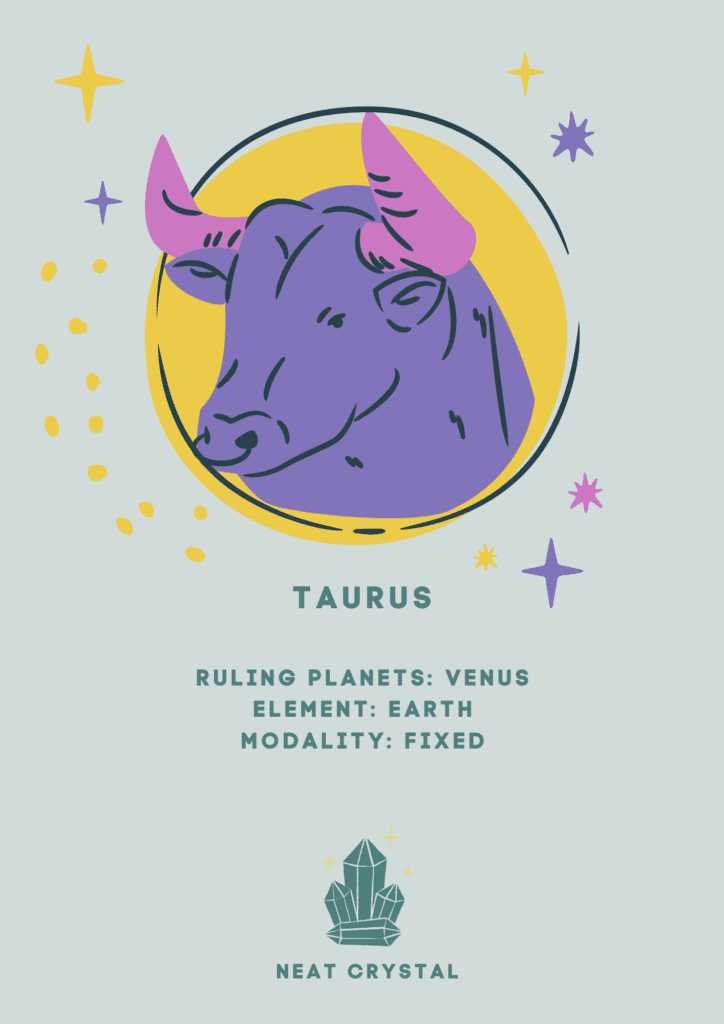
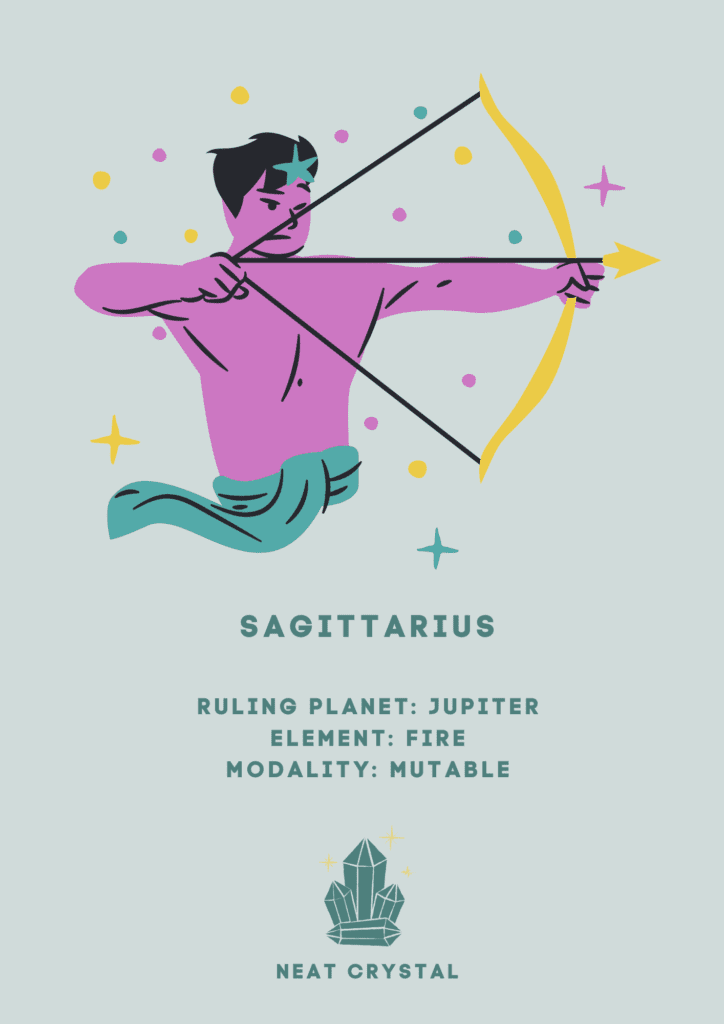
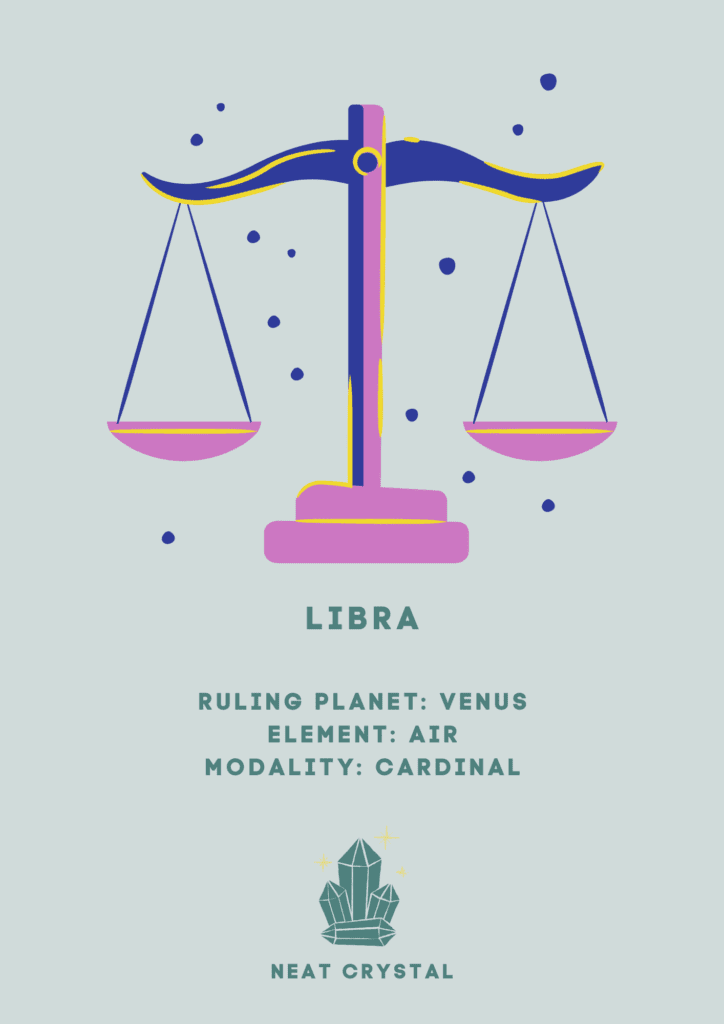
Element Association
Every stone can also be connected to one of the four elements, representing the following:
- Earth for personal growth, stability and security
- Water for love, friendships and emotions
- Air for intellect, wisdom and communication
- Fire for energy, passion and action
Moldavite is associated with the fire element. Work with this stone if you feel a lack of excitement or when you’re passive or procrastinating. It is also good for when you feel you have too much water, and are thus overly empathetic, for example. As fire is the opposite, it will help balance the energy out.
Malachite is an earth element stone, meaning it is a good option when you feel there is too much chaos in your life or you are having trouble manifesting. It is also good for those who have too much air energy, and are thus always overanalyzing or stuck in their head. Earth stones will help bring you back in your body.


Numerical Vibration
Moldavite vibrates at 6. The number is associated with love and family life. It is also the number that represents Virgo and Venus. The energies of the number are aligned with the earth and air elements of nature. Some key words for this number are nurturing, compassion, patience, and kindness.
Malachite vibrates at 9. This number is often used to signify completion. This is because it is the last single digit in numerology. This number can signify the end of a cycle and the beginning of another. Its energies are associated with transition, wisdom, and guidance. It is also a spiritual number for communication to divine realms.
Uses
There are many different ways to use these stones. Below we’ll outline a few options for you.
Jewelry
These stones aren’t just powerful, they’re also just very pretty. Besides, wearing these stones allows you to work with their energies all day, making them extra beneficial.
Make sure to wear them on the skin closest to the chakra they are associated with. For these stones, I recommend a longer necklace.
Make sure you take them off before you hop into the shower or go swimming, and keep in mind that daily wear will make these more likely to turn brittle and prone to chipping off.
Also, remember that moldavite is often reported to make people feel sick or nauseous when working with its energy all day. It is very powerful, after all.
Meditation
Include either of these stones in your meditation practices. The stones invite gratitude, open the heart and cleanse the environment. Moldavite is also believed to help with astral travel and lucid dreams.
I also recommend meditating with these stones when you first get them. This way, you can become a little more familiar with their energy.
If you’re using them to work on particular chakras, this works too! I’ll leave a guided meditation for the heart chakra, which will work with both stones below.
Best Combinations
Combining stones and crystals can be extremely beneficial in amplifying their properties. Here are a few ideas for crystal combinations for both of these stones:
- Malachite, rose quartz, and aventurine are used together to balance out the negative and positive energies. This combination also soothes the heart chakra.
- Moldavite can be paired with rose quartz for meditation and its therapeutic capabilities. This combination helps destructive thought patterns and restores love, kindness, and comfort.
- Moldavite can be combined with clear quartz for the crown chakra. The combination contains cleansing energies and enables strength and healing of the whole chakra system.

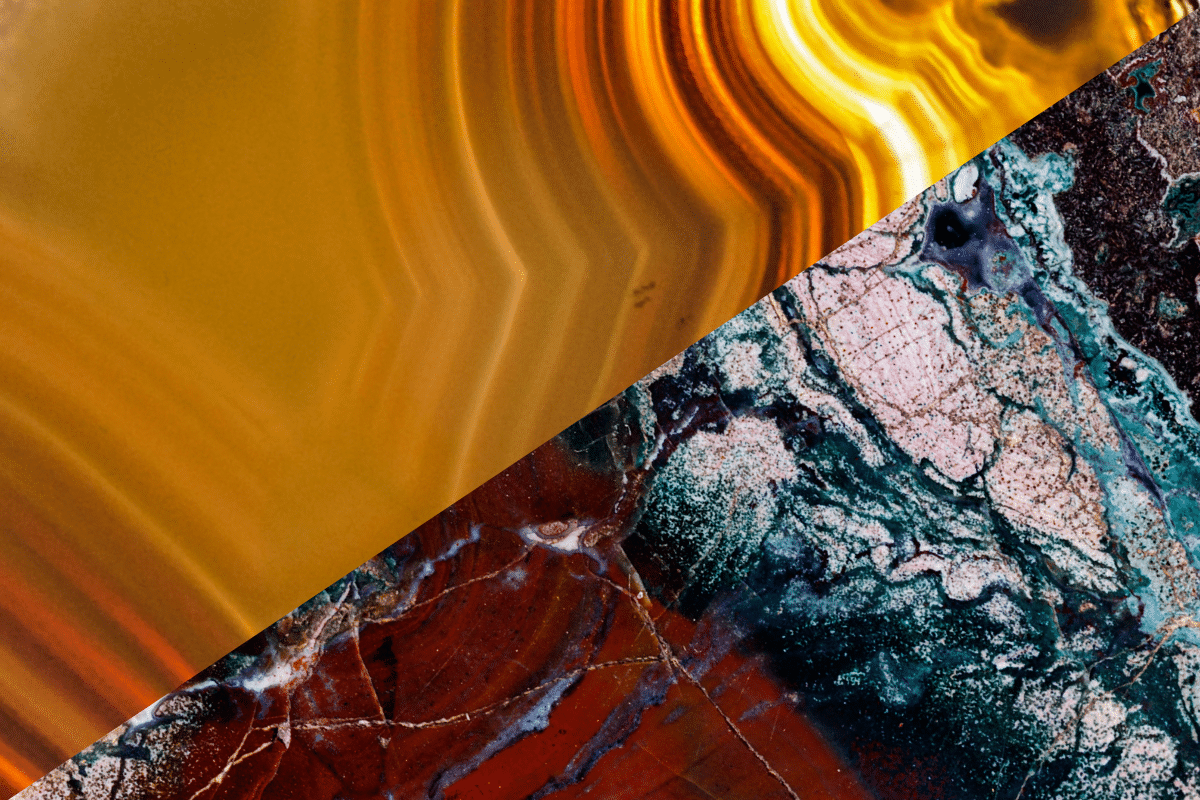

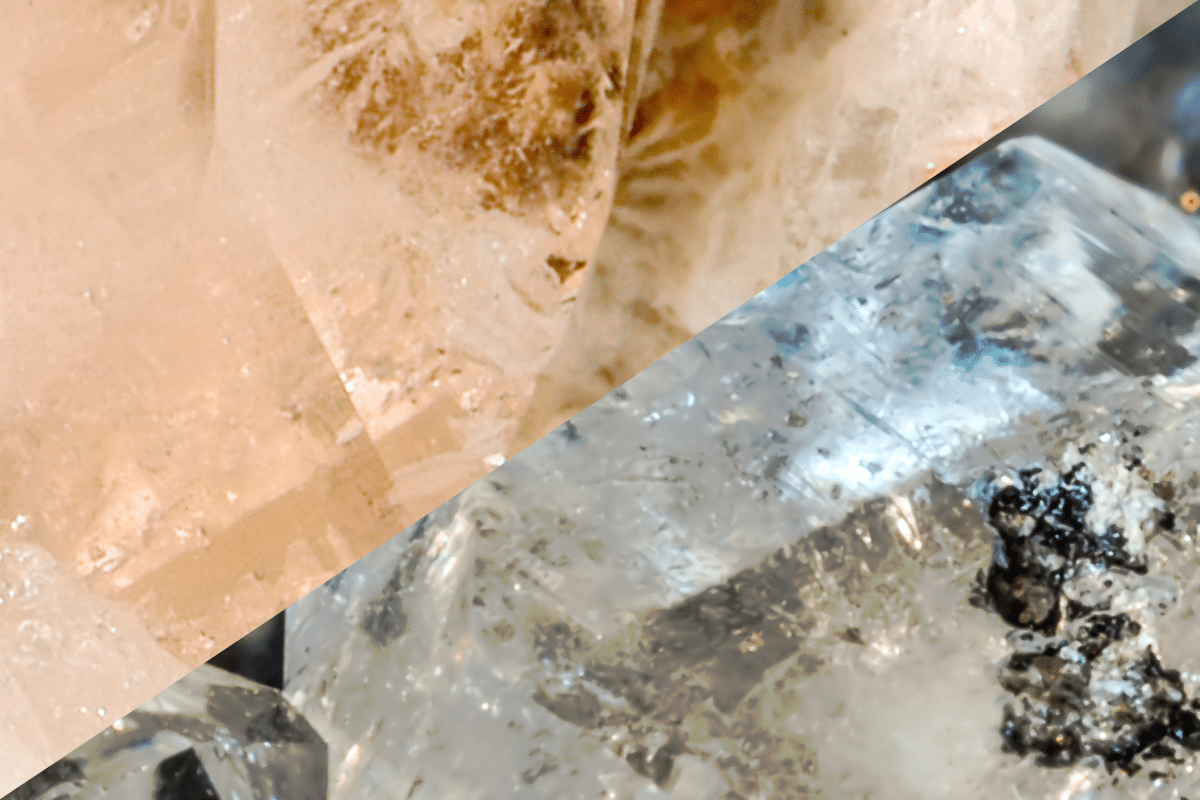
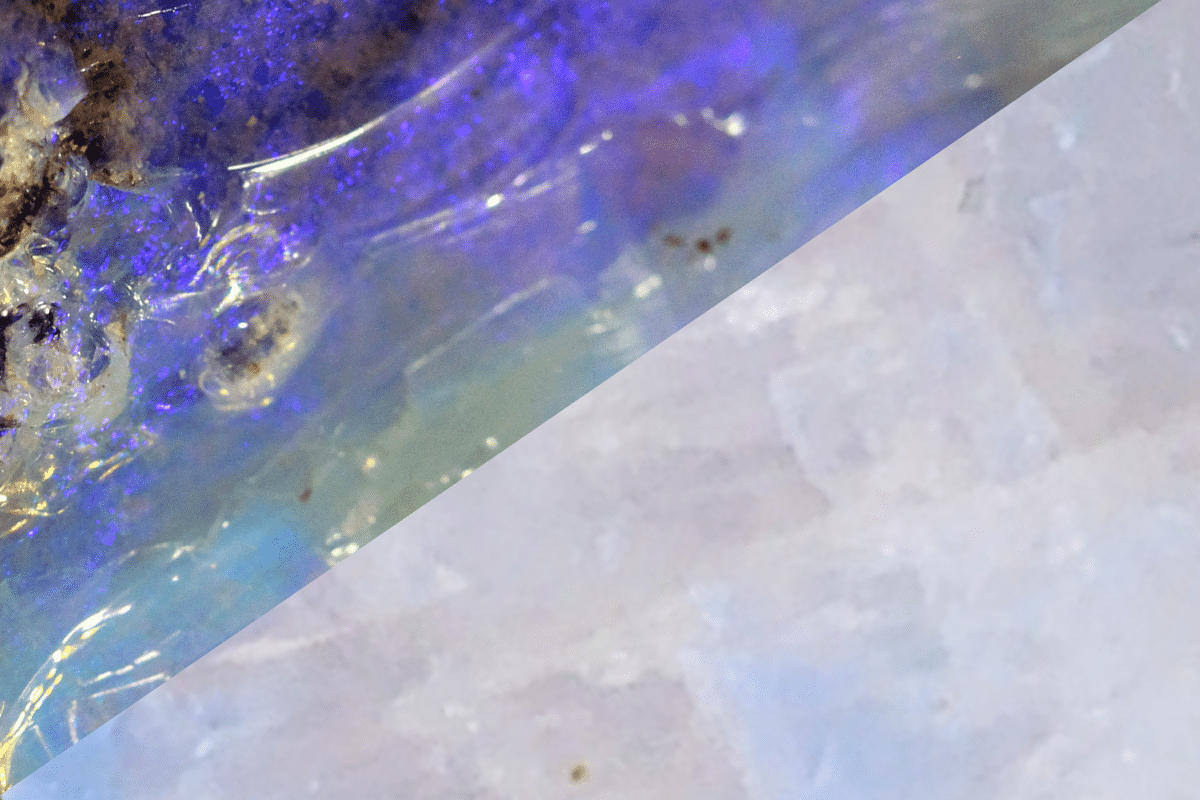
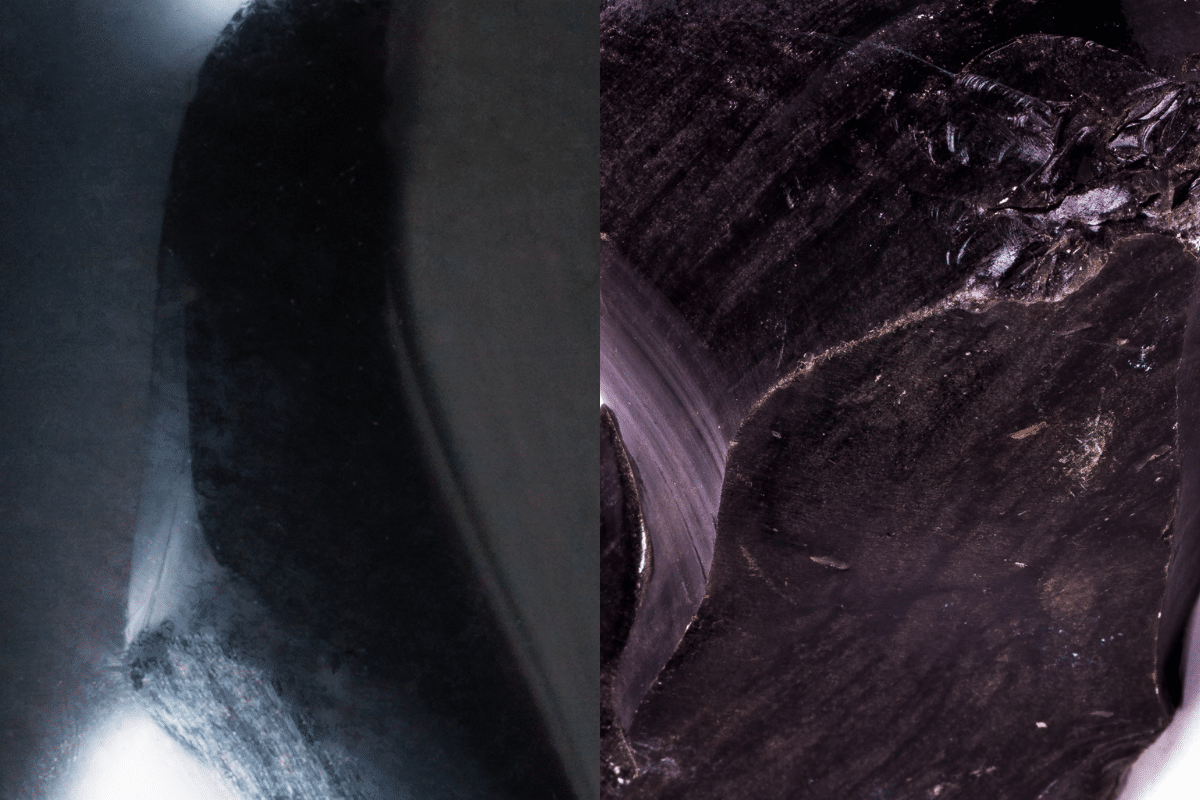

5 Comments